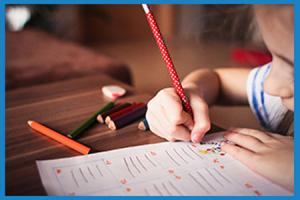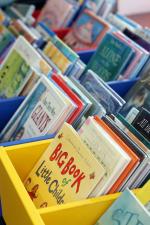7 Techniques for Generating Story Writing Ideas in KS2
Key Stage 2 is a great time for children.
Typically, they will have settled into the flow of learning new subjects, and as KS2 teachers you get to help them flourish by practising, repeating and refining their learnt skills. When it comes to teaching literacy this also means encouraging your class’s creativity.
However, on occasion creativity can be hard to come by and story writing lessons might not produce the outcomes you were hoping for. To help you combat this, here are some techniques and ideas to help you inspire your class with creative writing tasks.
1. Create a Classroom Story Generator
A story generator is guaranteed to get the creative juices flowing! Here’s how to do it:
Create three lists:
1) Characters
2) Scenes
3) Situations or tasks.
Write the ideas on paper and cut them out, then fold them up so you can’t see what’s written on them.
Find three bags (or any kind of container). Place all the folded character ideas in the first bag, the scenes in the second and the situations/tasks in the third. Ask each pupil to come up and draw a folded piece of paper from each bag. This will be the start of their story. Alternatively, you could build up five story-starting sentences from the bags and write them on the board. Your class could then choose which story they want to write.
Here are some examples to get you started:
|
Character |
Scene |
Situation / Task |
|
A Pirate |
A Sunny Beach |
Searching for their friend |
|
A Talking Cat |
A Ship at Sea |
Longs for an adventure |
|
An Elephant |
School at Night |
Is scared of thunder |
|
An Alien |
A Snowstorm |
Wants to learn to fly |
|
A Fairy |
A Haunted House |
Finds a stray dog |
You can tailor the ideas to suit your pupils’ abilities, age and preferences, which should really help to spark their imaginations.
2. Watch or Listen
It doesn’t have to be long or have any dialogue, but showing a short film to your class may help to trigger inspiration. Luckily there are literally millions of free videos available for this kind of thing. Vet them first to make sure they are completely suitable for your class, then turn down the lights and press play. You can show the video more than once, maybe asking the children to write notes on the second viewing which will help to inspire their stories.
Alternatively try playing a piece of instrumental music and ask your class to imagine what might be happening. Write their ideas and thoughts on the board and ask them to use this as the inspiration for a story.
3. Folklore and Fairy Tales
Traditional tales have been around for many years and for good reason! They are not only timeless but they serve an important purpose by carrying lessons or teaching morals. Read some in class and identify
they serve an important purpose by carrying lessons or teaching morals. Read some in class and identify
the tropes and techniques these stories use. Ask the children to interpret the story’s meaning. Then ask them to use these notes as a springboard to create their own fairy tales, complete with wicked witch or werewolf. What will the moral of their stories be?
4. Storyboards
You’re not asking your class to be artists; they can use simple stick figures and words to get their ideas down on paper. But asking your class to draw out their ideas will help them generate some interesting story twists. By getting the structure of their stories down on paper in a sequence, they will know the beginning, middle and end of their stories so when they come to start writing it out there’s not an ounce of KS2 writers block in sight!
5. A Newspaper Clipping
Newspapers can be a huge source of inspiration. Interesting or unusual stories can be cut out and stuck into a scrap book to bring out and show your class in times of creative need! Alternatively, you could show your whole class a newspaper clipping and ask them all to write a story about the same extract.
6. Rewrite A Known Story
Rewriting a known story with a different ending or a different character is a great way to generate
inspiration. This technique for generating story ideas can’t fail to produce results since the possibilities are endless!
For example:
- What if the story of Cinderella took place on Mars?

- What if Little Red Riding Hood lived in a jungle instead of a forest?
- What if the three little pigs were the three little wolves instead, and the big bad pig wanted to eat them for his dinner?
- What if Hansel and Gretel were actually the bad ones and wanted to eat the old lady?
- What if you asked your class to swap the characters in one story with the characters in another – Snow White and the Magic Beans, Jack and the Seven Dwarves.
Let your class’s imaginations run free and look forward to reading the end results!
7. Let the Children Choose
Set some homework for the children to go away and think of something they care about, something they are interested in, something which makes them happy, sad or angry and why that is. You could ask them to find a picture or a news story themselves which sparks their interest or emotion.
From the ideas generated at home, ask them to write a story in class. Passion is a wonderful muse after all, so if the children choose a topic that they really care about you should end up with some very good results!
How Can Mighty Writer Help?
If you want to take your pupils' writing skills to the next level, consider using Mighty Writer. This innovative resource is designed to make writing fun and engaging for young learners, while also developing their core literacy skills. With Mighty Writer, your pupils will love writing and you'll love the results!
Want to learn more about the Mighty Writer resource? Download our free Teachers Guide by clicking the link below!

